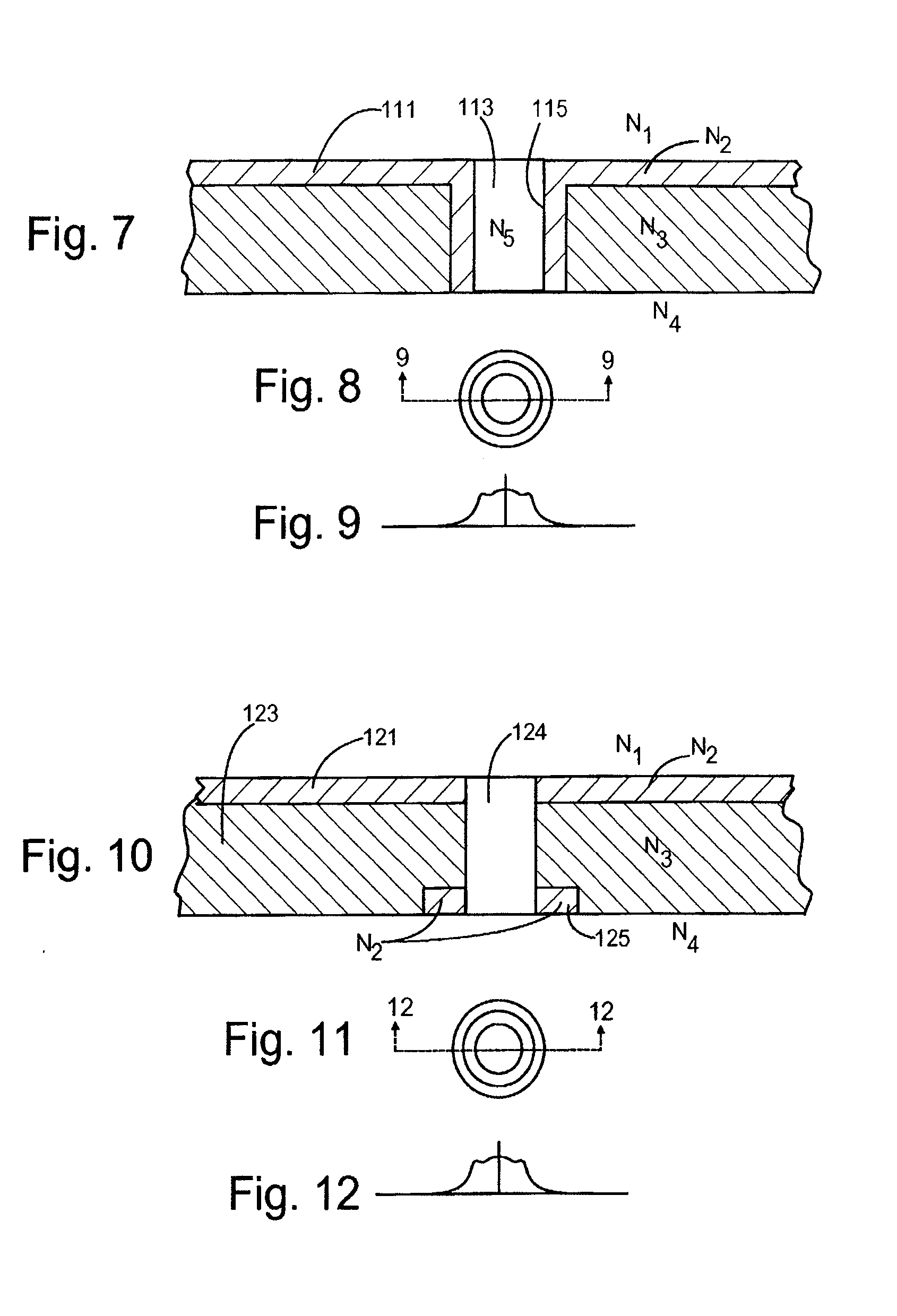Methods and apparatus for sensing a physical substance
a physical substance and sensing technology, applied in the field of methods and apparatus for sensing a physical substance, can solve the problems of multi-photon excitation, high cost of clinical use, and inability to resolve distances less than the rayleigh limit, so as to reduce the size of the illuminated area and improve the resolution
- Summary
- Abstract
- Description
- Claims
- Application Information
AI Technical Summary
Benefits of technology
Problems solved by technology
Method used
Image
Examples
Embodiment Construction
[0060] As described in U.S. Pat. Nos. 5,973,316 and 6,052,238 issued to Ebbesen et al., enhanced light transmission occurs through an array of apertures in a metal film due to the surface plasmons induced in the conductive film by the incident light.
[0061]FIG. 1 shows a cross section of an optically thick metal film 101. The term “optically thick” means that the thickness of the film 101 is greater than two times the skin depth. For all essential purposes, this means that there is no direct coupling of the surface plasmons (coherent collective excitations of electrons) at the upper surface (the interface between media of index N1 and N2) and the lower surface (the interface between media of index N3 and N2). In a typical case, the indices N1, N3, and N4 are equal while N2, the index of the metal film 101, is substantially different and the metal film 101, unlike the surrounding material, is a conductor of electronic charges.
[0062] If the array spacing and the dielectric functions ...
PUM
| Property | Measurement | Unit |
|---|---|---|
| wavelength | aaaaa | aaaaa |
| Forster distance | aaaaa | aaaaa |
| Forster distance | aaaaa | aaaaa |
Abstract
Description
Claims
Application Information
 Login to View More
Login to View More - R&D
- Intellectual Property
- Life Sciences
- Materials
- Tech Scout
- Unparalleled Data Quality
- Higher Quality Content
- 60% Fewer Hallucinations
Browse by: Latest US Patents, China's latest patents, Technical Efficacy Thesaurus, Application Domain, Technology Topic, Popular Technical Reports.
© 2025 PatSnap. All rights reserved.Legal|Privacy policy|Modern Slavery Act Transparency Statement|Sitemap|About US| Contact US: help@patsnap.com



